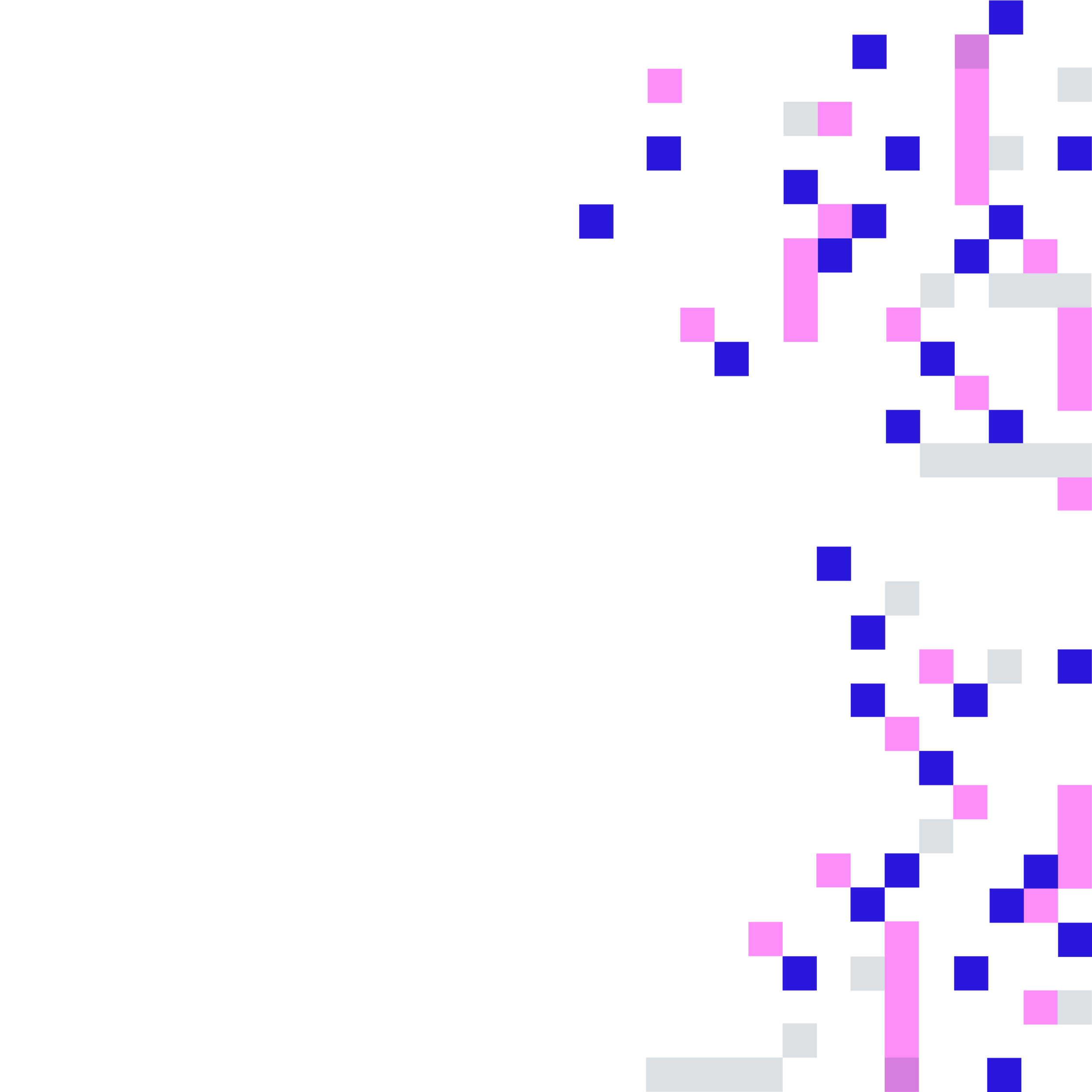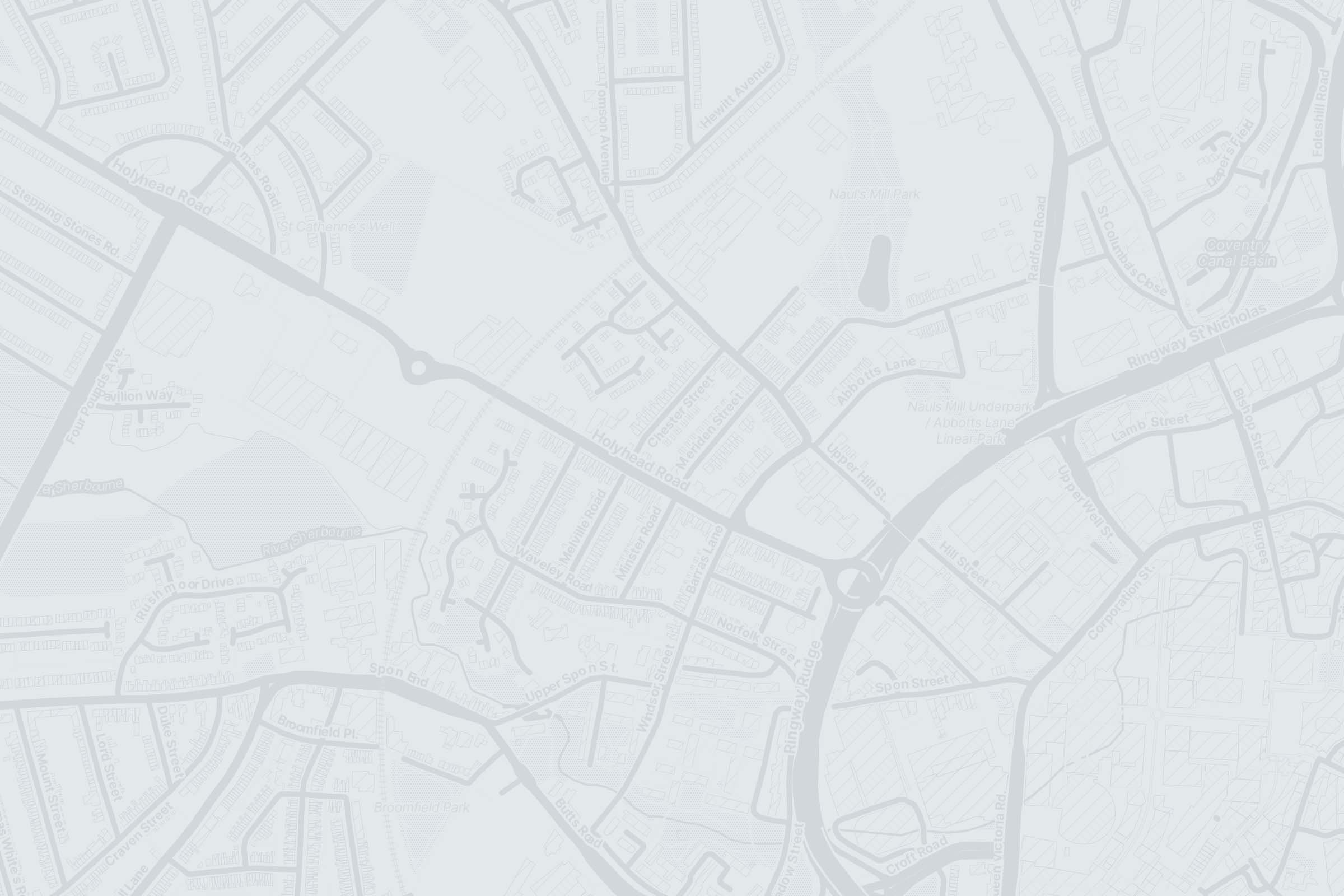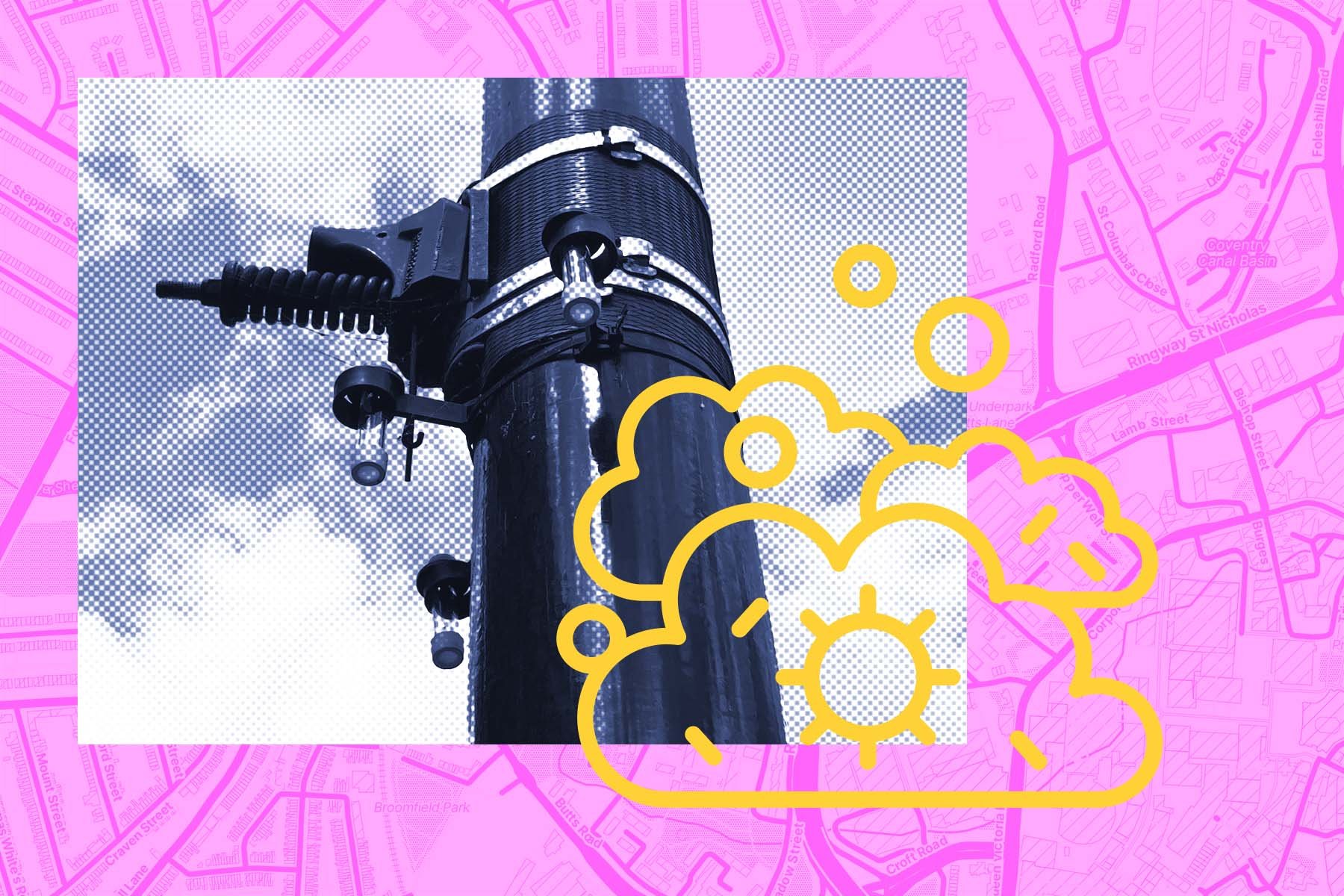
Jump to the Policy Recommendations | Research Findings
Coventry Observatory
Hosting a sensing walk in an automated vehicle test street; using eyes and ears as well as a smart phone app to locate invisible technologies along the road. They found plenty of sensors, cameras, antennae and boxes, but little sign of what they are for...
Collage adapted from Street surveillance technology by Iain Emsley from CIM.Mapping Future Mobility
In Coventry, the AI in the street team hosted a sensing walk along the Holyhead Road, a busy commuter and residential road that is part of the Midlands Future Mobility testbed.
Guided by an open-ended question - how does AI manifest in this street? small groups of residents, artists and researchers who live in the area looked for signs of AI in the street using their own senses and a smartphone app called the Unheard City.
Each group formed a multi-sensory organ and walked the environs using different senses – our bodies, our eyes and ears, the ‘Unheard City’ app sensor – to locate AI in the street. Participants made audio and voice recordings, sketched and noted down reminders of what they sensed, helped by a set of prompt questions on a worksheet and their phones.
Afterwards, they created a diagram of their findings at the Weaver’s Workshop. Using recordings and notes made during the walk, they created a multi-faceted diagram of the Holyhead Road, and the devices, situations and arrangements that enable AI innovation in this street. Once the diagram was completed, we narrated back to each other the stories recorded in our diagrams, identifying different ways in which AI is both invisible in the street as well visibly present through infrastructures that support cars and surveillance.

“All the signals in the road will impact people inside and outside the houses, there are many units of tech." [..]
"Most lampposts have two, three or four cameras attached to them. So much clutter.”
– Diagramming workshop, Audio recording, participant exchange
Holyhead Road, Coventry
“I understand that all these different uses of surveillance exist and have legitimacy but we don’t know why they are there. And it doesn’t seem like it’s very readily available information.”
Methodology
The Coventry Observatory adopted the method of the sensing walk, which is an a participatory, embodied approach to examining lived environments (Lacey et al, 2019; Waltham-Smith, 2023; Marres, 2024).
We adapted this method for the situated exploration of automated and connected environments, by using devices such as a smart phone app and worksheets to orient participants attention to the question of how "AI" manifests in the everyday setting of the Holyhead Road.
Walking together with residents, artists, and researchers who live and work inside the Midlands Future Mobility testbed, walking becomes a way to sound out the automated and connected environment as a lived environment and to grow attentive to the myriad ways in which AI innovation impacts on and transforms everyday urban settings.
Walking in small groups, participants conducted listening exercises in designated, AI-relevant hotspots along the Holyhead Road. They recorded their observations on worksheets containing prompts, made photos and sound recordings along the way, and scanned the setting for digital signals (wifi, bluetooth) using the Unheard city app. The UnheardCity application records the device’s location using its GPS signal while detecting and storing information about Bluetooth Low Energy, WiFi, and mobile phone towers.
“Walking together became a way of putting our collective ears and eyes in the streets in and around Coventry, to explore AI innovations looks, sounds and feels like from the standpoint of this city street.”
– Marres, 2024
The Sense Walk Diagram
Sonification
Sensing the environment can be enhanced by technology. We used the Unheard City app that monitored the radio environment of the street for wifi and bluetooth signals, collecting data and feeding it back as audio. The data was later plotted on maps, and shows interactions between individuals moving through the space, and the data envrironment.
Bird's Eye View of the Street's Composition
An audio composition by Derek Nisbet of Talking Birds, using field recordings and audio of participants in the sensing walks to create a portrait of Holyhead Road.
-
[A conversation over the noise of traffic in the street]
A lot of these things are taking away that control. If you're not driving a car any more, and you're not in control of where you can be as a pedestrian...
You've got all this messaging coming at you, youv'e got no say really in all this.
Yeah, you can't not... Like, I can NOT turn on my TV and NOT watch the adverts. I can not... you know...
Yeah you can't switch this off.
You can't really.
It's really intrusive
It's one of my big bugbears
So much signage. There used to be a lot of...
Speed Cameras
What's the ... I think the
The speed cameras are always yellow, in these yellow... I think we just passed one behind that sign
There's one over there as well
And then it starts changing...
Really? that's how you get it to change?
No
It it
It turns when
When the light goes red it starts spinning so you feel it.
Ahh, so you feel?
When there's no beepers, that's a way to tell when it's on.
Right.
[Birdsong]
This is some twittering, that's announced the nearby buildings
[Background music: a plaintive violin melody, folkish and mournful.]
My gran used to live in the maisonettes at Spon End
Where the flag... its a kind of a castle tower, no?
Oh, is that the... the jailhouse?
Yeah, he painted it.
Oh is that what it is?
A gateway...
A mediaveal wall
[A loud wooshing as a car passes]
It's quite a dangerous road to cross
Sometimes, there so much traffic I can't deal
[Background Music: The plaintive violin refrain swells]
I wish I'd bought...
A music instrument
Yeah!
Not just recording
Then occasionally it'll be a horrible BRRRRR you know the boy racer engines.
No actually this is kind of...
Like in lockdown, there was less travelling, what we were hearing
What we...
Nice.
There are long distance whale calls in the ocean that whales have stopped bothering to use, but during the lockdowns they started using them again because there wasn't as much noise, noise pollution, in the ocean. That was a fun but depressing fact.
It's interesting as well because the starlings near us will pick up the different sounds. Really annoyingly one of the Starlings was mocking the car alarm - and it was, we thought, it sounded like the car alarm kepts going off, and then we realised it was actually the birds have started mimicing the car alarm
Thats Amazing!
I didn't know starlings did that
Yeah they do it a lot.
We can tell the birds that are from around our garden and those areas because they have the same calls.
[Violin music fades]
Participants
Huge thanks to all of our participants (Akeel, Carol, Charlie, Dana, Ian, Lisa, Matt, Nirmal, Rhiannon, Sanjay, Steve, and Winter) for making the workshop so fruitful and so enjoyable with their interesting insights and generous, thoughtful contributions.
Thanks to
The cross-disciplinary Coventry Observatory research team who put this together consists of:
Noortje Marres - Professor in Science, Technology and Society in the Centre for Interdisciplinary Methodologies at the University of Warwick noortjemarres.net
Iain Elmsley - Research Software Engineer, Centre for Interdisciplinary Methodologies unheardcity.org.uk
Yasmin Boudiaf - Researcher and Creative Technologist, yasmine-boudiaf.com
Derek Nisbet - Composer and Theatre Maker, Talking Birds
Janet Vaughn - Designer and Co-Artistic Director, Talking Birds

“The LED messaging screen, it’s light pollution. [..] These days birds sing at night because of light pollution. The lights in the car park are there to protect the cars.”
– Diagramming workshop, Audio recording, participant exchange.
What We Observed

“"The cameras in the lampposts, they do not communicate with us, they are above our heads, literally, they communicate with elsewhere […] These boxes are not giving anything, they are just extracting. they seem designed not to draw attention to themselves.”
– NW, Participant.
Further Information and Links
Unheard City - a project to explore the Internet of Things through sonification.
In search of magical capabilities on the Holyhead Road. Talking Birds' Janet Vaughan reports on "AI in the Street" activities in Coventry

Research Findings in Depth: The Observatories
-

Cambridge, UK
What data do disabled people need to move through the street, and how does urban infrastructure interact with the lived experience of access needs?
-

Coventry, UK
How does the AI infrastructure needed for autonomous vehicle trials impact other human and more-than-human users of the street - and how might we see and hear the effects?
-

Edinburgh, UK
Engaging with residents and users of Leith Walk, seeking to capture everyday encounters with AI and understand people’s views of AI’s impact on the street.
-

Logan, AUS
Logan is one of the world’s largest drone delivery trial sites. But what do locals feel about the presence of commercial and autonomous drone delivery systems in their neighbourhood?
-

London, UK
How does AI fulfil expectations, desires and requirements in the street, and what complications does it create? Might innovation emerge from community-driven (rather than industry-led) design?




























